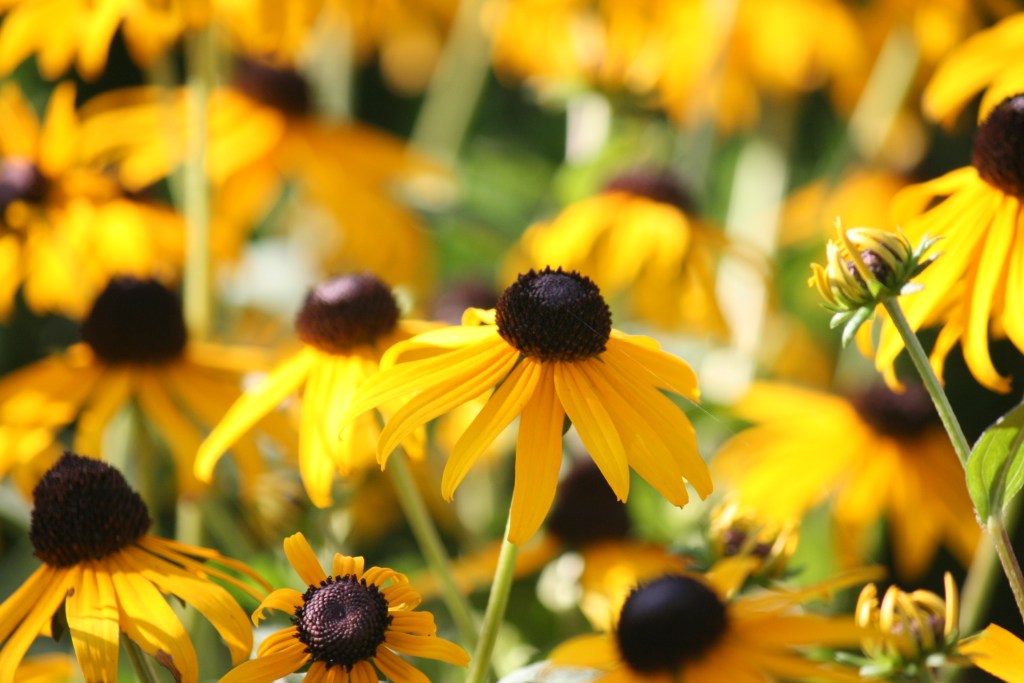THE GARDEN SPOT: Adding perennials to your landscape
Published 6:15 pm Thursday, March 7, 2019

- The tops of perennials, like the black-eyed Susan, are killed by frost, but the roots and crown will survive most winters.
Among all the seeds and bedding plants at your local garden centers are an array of plants called perennials.
Thinking back to elementary school, you may remember “perennial” comes from the Latin “per annus,” which means “through the years.” In horticulture terms, it means “lasting” or “returning.” Translated to plants, this means plants that return for more than two years.
Trending
Perennials are a bit more expensive when you first purchase them, but the fact that you can count on them for many years to reappear in the spring means they are an investment for your landscape. Perennials’ tops are killed back by frost but the roots and crown will survive most winters.
Here are some facts about perennials:
• Most perennials grow and flower season after season. Many thrive for a very long time, while others return for only a few years. Some perennials reseed readily and may be moved around the garden;
• Unlike annuals, perennials have a definite period of bloom. Plants bloom in either the spring, summer or fall. Perennials may bloom from two to eight weeks or longer. One challenge is to use a variety of perennials so that color is available throughout the growing season; and
• Although perennials do not require replanting every year, they do require watering, fertilizing, mulching, cutting back, weeding, dividing and sometimes transplanting.
Planting and care
Trending
Plant your perennials at the right time. If you are starting new perennials, the challenge is fairly simple because they are sold and/or shipped at the correct planting time. For instance, April and May is the best time to plant late summer and early fall perennials. Examples of these include the canna lily, many lilies, lavender, verbena and wormwood. Early spring-blooming perennials (like tulips and daffodils) should be planted in the fall.
Soil preparation is probably the most important factor in growing perennials successfully. In addition to good drainage, provide abundant quantities of organic matter, a soil pH of 5.5 to 6.5 and fertilizer.
If plants are somewhat pot-bound at planting time, simply loosen the roots around the bottom and sides of the root ball and spread them out in the bottom of the planting hole. Cover and firm the soil lightly around the plant. Be sure the crown (the persistent base of the perennial) of the plant is at or slightly above ground level.
Two important secrets to growing perennials successfully are watering and controlling weeds. After planting, thoroughly water plants to settle soil around the roots.
Keeping a good-looking perennial bed should not be difficult. Use these four maintenance guidelines:
• Carefully water after planting and during the first season while the plant becomes established. Water to 1 inch per week during the growing season if water is not supplied by rainfall. Do not overwater;
• Keep a diligent watch for weeds, especially in the first few seasons. Maintaining a good mulch should control annual weeds;
• Cut the dead foliage of perennials to the ground after the first hard freeze in the fall. Do not remove that foliage immediately after flowering; and
• Divide most perennials periodically. Some require deadheading for continued bloom and others require staking.
— For information on topics related to the home and garden, contact any office of the Alabama Cooperative Extension System. The Limestone County Office is located at 1109 West Market St. in Athens. Office hours are 8 a.m.-4:30 p.m. Monday through Friday. For more information, call 256-232-5510 or visit www.aces.edu.



